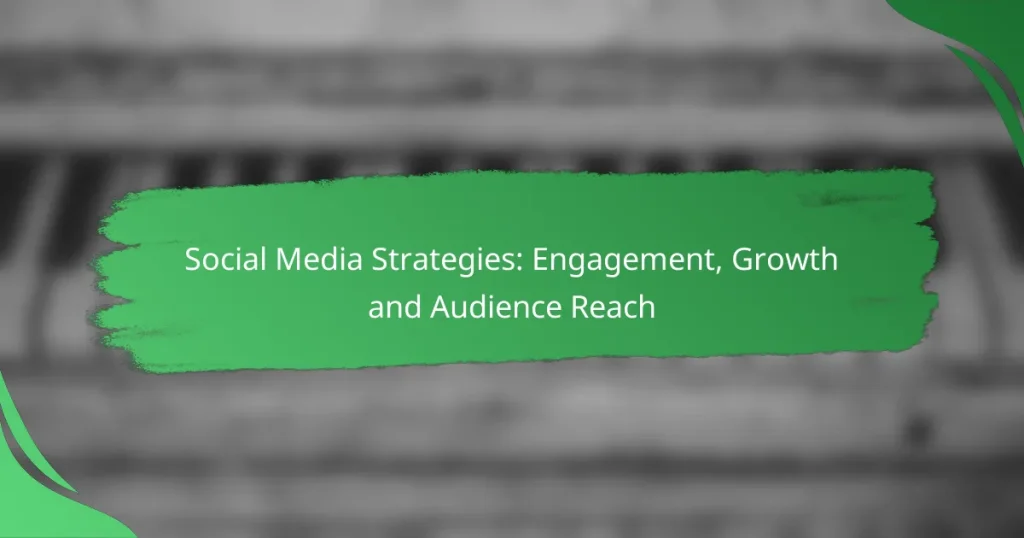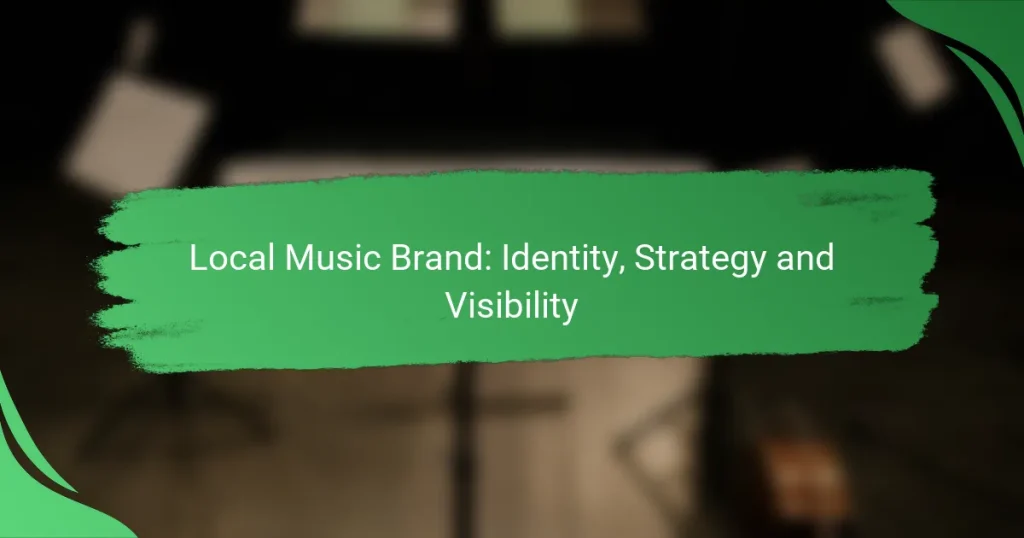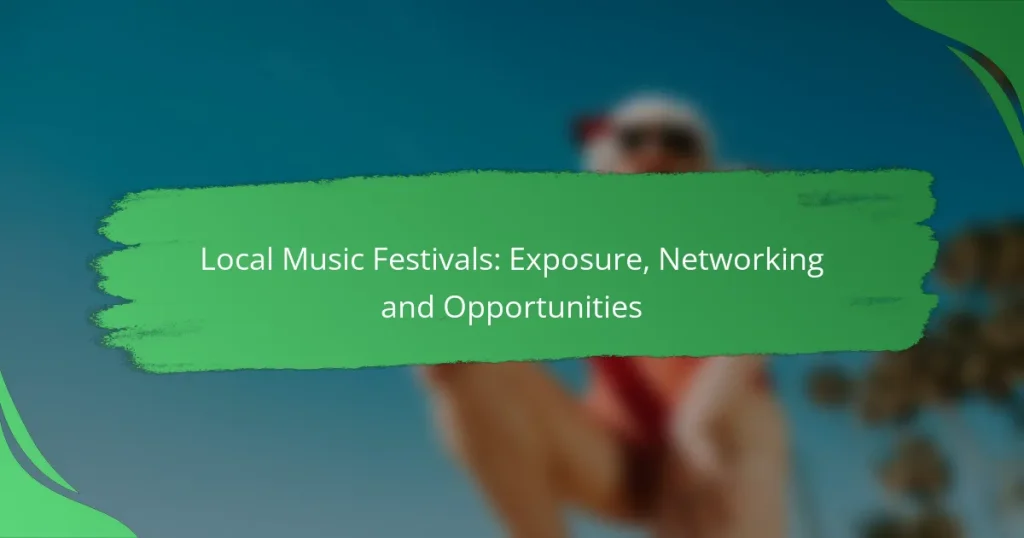Local artists have a wealth of opportunities to promote their work and connect with their communities. By utilizing social media, collaborating with local businesses, and participating in community events, they can significantly enhance their visibility and engagement. Additionally, creating an online portfolio and leveraging email marketing can further amplify their reach and showcase their artistic talents effectively.
Social Media Strategies: Engagement, Growth and Audience Reach
Collaborating with Local Businesses: Strategies, Benefits and Promotion
Local Music Brand: Identity, Strategy and Visibility
Local Music Festivals: Exposure, Networking and Opportunities
Engaging Content: Formats, Platforms and Audience Interaction
Email Marketing: Engagement, Retention and Fan Connection
How can local artists promote their work effectively?
Local artists can promote their work effectively by leveraging various strategies that enhance visibility and engagement within their communities. Key methods include utilizing social media, collaborating with local businesses, participating in community events, creating an online portfolio, and leveraging email marketing.
Utilizing social media platforms
Social media platforms like Instagram, Facebook, and TikTok are essential for local artists to showcase their work and connect with potential fans. Artists should regularly post high-quality images or videos of their creations, share behind-the-scenes content, and engage with followers through comments and direct messages.
To maximize reach, artists can use relevant hashtags, join local art groups, and collaborate with influencers. Consistency in posting and interacting with the audience can significantly boost visibility and foster a loyal community.
Collaborating with local businesses
Partnering with local businesses can provide artists with exposure and new audiences. This can involve displaying artwork in cafes, shops, or galleries, or creating custom pieces for businesses. Such collaborations can also lead to joint events or promotions that benefit both parties.
Artists should approach businesses that align with their style and values, proposing mutually beneficial arrangements. This strategy not only enhances visibility but also strengthens community ties.
Participating in community events
Engaging in community events like art fairs, exhibitions, or local markets allows artists to showcase their work directly to the public. These events often attract art enthusiasts and potential buyers, providing a platform for networking and sales.
Artists should actively seek out local events and consider applying for participation well in advance. Having promotional materials, such as business cards or flyers, can help leave a lasting impression on attendees.
Creating an online portfolio
An online portfolio is crucial for local artists to present their work professionally. This can be a personal website or a dedicated page on platforms like Behance or ArtStation. A well-organized portfolio should include high-quality images, descriptions of each piece, and contact information.
Artists should ensure their portfolio is easy to navigate and mobile-friendly, as many potential clients may browse on their phones. Regularly updating the portfolio with new work keeps it fresh and engaging.
Leveraging email marketing
Email marketing is an effective way for local artists to maintain communication with their audience. By building an email list through website sign-ups or social media, artists can send newsletters featuring new work, upcoming events, or exclusive offers.
Artists should aim for a consistent schedule, such as monthly updates, and include visually appealing content. Personalizing emails and segmenting the audience based on interests can enhance engagement and response rates.
What are the best social media strategies for local artists?
The best social media strategies for local artists focus on building community connections and showcasing their work effectively. Utilizing platforms like Instagram, Facebook, and TikTok can significantly enhance visibility and engagement with local audiences.
Engaging with local audiences on Instagram
Instagram is a powerful tool for local artists to connect with their community. By posting high-quality images of artwork, behind-the-scenes content, and engaging stories, artists can attract local followers. Using location tags and relevant hashtags can help reach a wider audience in the area.
Consider hosting Instagram Live sessions or Q&A segments to interact directly with followers. This real-time engagement fosters a sense of community and encourages local support.
Using Facebook groups for artist promotion
Facebook groups can be an effective platform for local artists to promote their work and connect with potential customers. Joining groups focused on local art, culture, or community events allows artists to share their creations and participate in discussions.
Regularly posting updates, events, or promotions in these groups can help maintain visibility. However, it’s crucial to follow group rules regarding self-promotion to avoid being removed.
Creating TikTok videos to showcase art
TikTok offers a unique opportunity for local artists to showcase their work through short, engaging videos. Artists can create time-lapse videos of their creative process, tutorials, or even fun challenges related to their art style.
Using trending sounds and hashtags can increase the chances of reaching a broader audience. Collaborating with other local creators on TikTok can also expand visibility and foster community connections.
How can local artists collaborate with businesses?
Local artists can collaborate with businesses by forming partnerships that benefit both parties. These collaborations often enhance community engagement and provide artists with exposure while helping businesses attract customers.
Hosting joint events with cafes
Joint events with cafes can create a vibrant atmosphere that draws in patrons. Artists can showcase their work through exhibitions or live painting sessions, while cafes can offer special promotions or themed menus to complement the event.
Consider scheduling events during peak hours or local festivals to maximize attendance. Collaborating on marketing efforts, such as social media promotions, can also enhance visibility for both the artist and the cafe.
Offering artwork for local shops
Local shops can display and sell artwork, providing artists with a platform to reach new customers. This arrangement can be beneficial for shops as well, as unique artwork can enhance their ambiance and attract more foot traffic.
Artists should approach shops with a portfolio and discuss potential commission structures or consignment agreements. It’s important to ensure that the artwork aligns with the shop’s brand and customer base for a successful partnership.
Creating merchandise with local brands
Collaborating with local brands to create merchandise can expand an artist’s reach and generate additional income. Items such as t-shirts, tote bags, or prints featuring the artist’s designs can appeal to both the artist’s and the brand’s audiences.
When creating merchandise, consider the production costs and pricing strategies to ensure profitability. Establishing clear agreements on profit sharing and branding can help maintain a positive working relationship between the artist and the brand.
What community events should local artists participate in?
Local artists should engage in community events that foster connections and showcase their work. Participating in these events can enhance visibility, build relationships, and attract potential buyers or collaborators.
Local art fairs and festivals
Art fairs and festivals are excellent platforms for local artists to display their creations and connect with art enthusiasts. These events often attract large crowds, providing artists with significant exposure and the opportunity to sell their work directly to the public.
When selecting art fairs, consider factors such as location, expected attendance, and fees. Many fairs charge participation fees, which can range from modest to substantial, depending on the event’s scale and prestige.
Charity events and fundraisers
Charity events and fundraisers allow local artists to contribute to meaningful causes while gaining exposure. By donating artwork or participating in auctions, artists can showcase their talents and connect with community members who share similar values.
These events often have a supportive atmosphere, making them ideal for networking. Artists should research local charities that align with their mission and consider how their work can contribute to the cause.
Workshops and classes for the community
Hosting workshops and classes is a great way for local artists to engage with the community and share their skills. These events can help build a loyal following and establish the artist as an authority in their field.
Artists should consider offering classes that cater to different skill levels and interests, such as painting, sculpture, or digital art. Pricing can vary; a reasonable range might be between $20 to $50 per participant, depending on the duration and materials provided.
What are the key elements of an online portfolio?
An effective online portfolio showcases an artist’s work and provides essential information to potential clients and galleries. Key elements include high-quality images, a compelling biography, and clear contact details.
High-quality images of artwork
High-quality images are crucial for an online portfolio as they directly represent the artist’s work. Use professional photography or high-resolution scans to ensure colors and details are accurately displayed. Aim for a variety of images, including close-ups and full views, to give a comprehensive look at each piece.
Consider optimizing images for web use by compressing them without losing quality, which helps in faster loading times. A good rule of thumb is to keep image file sizes under 1 MB for optimal performance.
Artist biography and statement
An artist biography provides context about the artist’s background, influences, and artistic journey. Keep it concise, ideally between 150-300 words, focusing on key achievements and experiences that shape your work. This helps potential clients and galleries understand your unique perspective.
The artist statement should articulate the themes and concepts behind your artwork. This is an opportunity to connect emotionally with viewers, so use clear and engaging language. Aim for a length of around 200-400 words, explaining what inspires you and the message you wish to convey through your art.
Contact information and social links
Clear contact information is essential for facilitating inquiries and opportunities. Include an email address and, if applicable, a phone number. Make sure this information is easy to find, ideally placed on the homepage or in a dedicated contact section.
Linking to social media profiles can enhance visibility and engagement. Include platforms where you actively share your work, such as Instagram, Facebook, or LinkedIn. Ensure these links are functional and lead directly to your profiles to encourage interaction with your audience.
How can email marketing benefit local artists?
Email marketing can significantly enhance local artists’ visibility and engagement with their audience. By building a targeted email list, artists can directly communicate with fans, share updates, and promote events or new works, fostering a loyal community.
Building a targeted email list
Creating a targeted email list is essential for effective email marketing. Local artists should collect email addresses at events, through social media, and on their websites. Offering incentives, such as exclusive content or discounts, can encourage sign-ups.
Utilize platforms like Mailchimp or Constant Contact to manage your list and segment it based on interests or demographics. This allows for tailored messaging that resonates with different audience segments.
Crafting engaging content
Engaging content is key to keeping subscribers interested. Local artists should share behind-the-scenes stories, upcoming shows, and personal insights into their creative process. Visual content, such as images or videos of artwork, can enhance engagement.
Consider including a monthly newsletter that highlights recent projects, upcoming events, and special offers. Keep the tone authentic and personal to strengthen the connection with your audience.
Analyzing performance metrics
Regularly analyzing performance metrics helps local artists refine their email marketing strategies. Key metrics to track include open rates, click-through rates, and subscriber growth. These insights can inform future campaigns and content adjustments.
Use A/B testing to experiment with different subject lines or content formats. This helps identify what resonates best with your audience, allowing for continuous improvement in your email marketing efforts.






